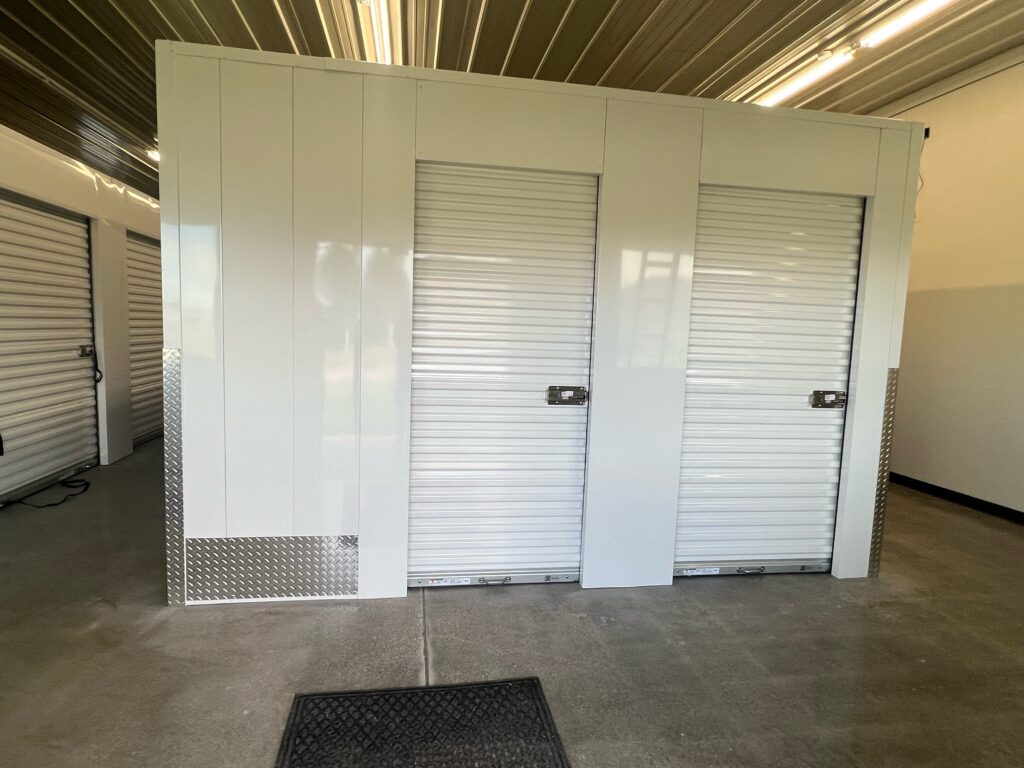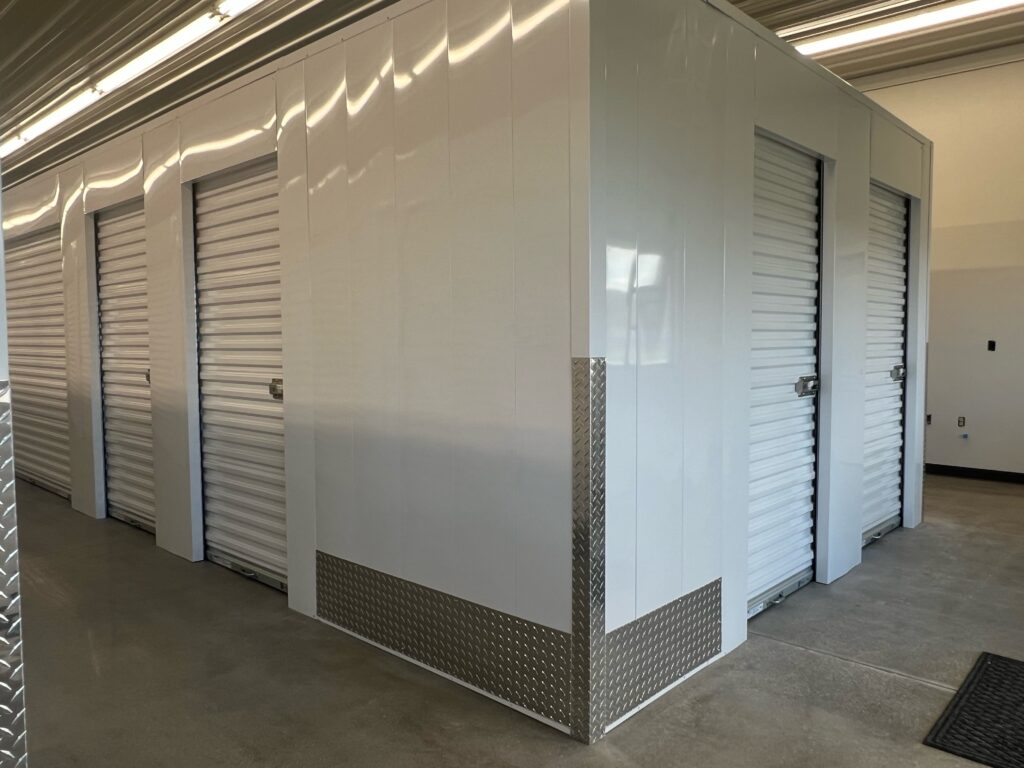5 Benefits of Inventory Control That Cut Costs and Stockouts
Running out of best‑sellers while shelves fill with slow movers is more than frustrating—it’s expensive. Stockouts erode trust and revenue; excess stock ties up cash and racks up storage, handling, and shrink costs. Add in miscounts, long pick times, and seasonal swings, and even well‑run teams can end up firefighting instead of fulfilling. If that sounds familiar, the issue isn’t demand alone—it’s control.
Inventory control is the discipline of keeping the right items, in the right quantities and locations, at the right time. Done well, it cuts waste, frees working capital, and makes availability predictable. This article breaks down the five most valuable benefits of inventory control—with plain‑English definitions, how each benefit reduces costs and stockouts, the key metrics to watch, and a quick example you can apply. You’ll also see where flexible, climate‑controlled storage can support leaner operations when you need overflow capacity without risking product quality. Here are five benefits that move the needle fast. https://www.youtube.com/embed/b8kb5Yda3LQ
1. Lower storage and carrying costs (and how Keyless Storage’s flexible, climate-controlled units help)
What this benefit means
Inventory control trims “carrying costs”—the ongoing expenses of holding stock like storage, handling, insurance, and labor—by keeping only what you need, where you need it. Strong stock control also curbs waste and obsolescence, especially for perishable or sensitive items, which helps you avoid paying for space and inventory that isn’t moving.
How it cuts costs and stockouts
The benefits of inventory control show up quickly when you right-size on-hand stock and use overflow space only when demand spikes. That way you lower fixed storage spend without risking empty shelves.
- Right-size reorder points: Maintain lean safety stock to cut rent and insurance while avoiding stockouts.
- Lean space utilization: Slot fast-movers up front and cycle count to reduce touches, handling, and shrink.
- Use offsite overflow smartly: Keyless Storage offers climate-controlled, ground-floor units with 24/7, smartphone-enabled access—ideal for seasonal or temperature-sensitive inventory without expanding your warehouse.
Metrics to track
Use a small dashboard to prove the savings and guard availability.
- Carrying cost %:
total carrying costs / average inventory value - Inventory turnover & DIO: Turn faster; hold fewer days of stock
- Storage utilization & shrink: Space used vs. paid for; loss rate
Quick example
A Sioux City retailer faces a summer surge. They lower safety stock on slow movers, move excess seasonal inventory into a climate-controlled 10×10 at Keyless Storage, and keep fast movers on-site. With 24/7 mobile access and ground-floor loading, teams pull overflow as needed—reducing warehouse costs while keeping best-sellers in stock.
2. Fewer stockouts and less overstock with real-time inventory visibility
What this benefit means
Real-time inventory visibility is a live view of what’s on hand, what’s committed to orders, and what’s inbound—across warehouses, retail floors, and online channels. When inventory control surfaces that picture continuously, teams can spot demand surges, slow movers, and backorders early, reducing errors and keeping supply aligned with actual demand.
How it cuts costs and stockouts
Without visibility, teams reorder too late or buy too much. With it, you maintain leaner safety stock, avoid overselling, and keep popular SKUs available. This is one of the core benefits of inventory control: avoiding stockouts and excess stock while improving customer experience and margins.
- Sync sales and stock in real time: Prevent overselling and order cancellations by aligning online/POS orders with on-hand units.
- Automate smart replenishment: Reorder using current demand and lead times to hit service levels with less buffer.
- Allocate by priority: Route limited stock to high-velocity channels first to protect revenue.
- Flag slow movers: Mark down or bundle aging inventory to free space and cash.
- Trace exceptions fast: Use lot/serial and cycle counts to correct discrepancies before they become outages.
Metrics to track
Measure availability and balance, not just volume.
- Stockout rate & fill rate (service level)
- Backorder rate and average days to fill
- Oversell incidents and order cancellations due to OOS
- DIO (days of inventory on hand) and inventory turnover
- ATP accuracy (available-to-promise accuracy) by SKU
Quick example
An omnichannel home goods seller syncs POS, ecommerce, and receiving. When a viral post spikes demand for a lamp, the system reallocates remaining units to online first, auto-creates a purchase order, and flags a slow-moving rug for a bundle promo. Result: fewer stockouts, less overstock, and higher turnover without adding safety stock.
3. Higher inventory accuracy and faster order fulfillment
What this benefit means
Inventory accuracy means your system counts match what’s physically on the shelf—by item, location, and lot/serial. When accuracy is high, pickers find the right product the first time and orders flow without rework. This is one of the core benefits of inventory control: fewer errors, fewer surprises, and consistently faster fulfillment.
How it cuts costs and stockouts
Bad data creates misses—overselling items you don’t have and sitting on items you can’t find. Tight controls like cycle counting, standardized locations, and barcode/RFID scanning keep records clean, so you cut labor waste, avoid emergency expedites, and keep popular SKUs available.
- Cycle count frequently: Catch discrepancies early instead of waiting for annual counts.
- Scan, don’t key: Use barcodes/RFID to reduce mis-picks and update stock in real time.
- Slot smartly: Put high-velocity SKUs in fast pick zones to shorten travel.
- Standardize moves: One in/one out transactions with clear location control.
Metrics to track
Measure both data quality and speed to value.
- Inventory record accuracy (IRA):
matching records / records counted - Pick accuracy:
correct items picked / items picked - Order cycle time:
ship timestamp - order received timestamp - Perfect order rate (OTIF):
orders on time and in full / total orders - Lines picked per hour: Throughput by picker/zone
- Cycle count hit rate: Counts completed vs. planned and adjustments per count
Quick example
A regional wholesaler replaces manual keying with barcode scans and institutes daily cycle counts on A‑items. Within weeks, pick accuracy climbs, order cycle time drops, and “phantom stock” disappears. Result: fewer backorders on best‑sellers and faster, first‑attempt fulfillment—the practical benefits of inventory control in action.
4. Stronger cash flow and working capital from right-sized inventory
What this benefit means
Inventory is cash sitting on shelves. When inventory control keeps quantities aligned with real demand, you tie up less money in stock, cut carrying costs, and turn goods into cash faster. The payoff isn’t abstract: healthier working capital to fund marketing, payroll, and growth—without sacrificing availability on the items that actually sell.
How it cuts costs and stockouts
Right-sizing inventory improves liquidity while protecting service levels. The benefits of inventory control here come from matching buys to demand and eliminating dead weight that burns cash.
- Demand-driven reorder points: Adjust safety stock with lead times and velocity to lower averages without risking outages.
- Cull and convert dead stock: Identify slow movers early for markdowns, bundles, or returns to free cash.
- Avoid emergency expedites: Accurate planning reduces rush shipping and premium buys that drain cash.
- Negotiate smarter: Visibility into volumes supports better supplier terms and MOQs.
Metrics to track
Watch cash efficiency alongside availability.
- Inventory turnover and DIO (days of inventory on hand)
- Carrying cost %:
total carrying costs / average inventory value - Cash conversion cycle (CCC):
CCC = DIO + DSO - DPO - Backorder rate to ensure leaner stock isn’t hurting service
Quick example
A regional e‑commerce brand trims safety stock on B/C items, liquidates aged SKUs, and reorders A‑items more frequently in smaller lots. Turnover improves, CCC shortens, and carrying cost % drops—freeing cash for ad spend—while fill rates hold steady thanks to demand‑based reorder points.
5. Better customer experience and service levels through reliable availability
What this benefit means
Reliable availability is the customer-facing result of solid inventory control. When counts, commitments, and channels stay in sync, shoppers see accurate availability and promise dates, receive complete orders on time, and trust you’ll deliver again. That predictability translates to loyalty and lower support costs.
How it cuts costs and stockouts
Consistent availability prevents overselling, cancellations, and costly rush fixes. The benefits of inventory control here come from keeping promises and protecting product quality while focusing limited stock where it matters most.
- Accurate ATP, no overselling: Align ecommerce/POS with real on-hand and backorders to avoid cancellations.
- Prioritized allocation: Reserve constrained stock for high-velocity SKUs and key customers.
- Dynamic safety stock on A‑items: Adjust to demand and lead time to prevent outages without bloating inventory.
- Quality preserved: Rotate and store sensitive goods in climate control to cut damage and returns.
- Exception alerts: Spot supplier slippage early to substitute or expedite before ship dates are missed.
Metrics to track
Track promise-keeping alongside inventory balance to prove service gains.
- Fill rate (service level):
fill rate = fulfilled order lines / total order lines - OTIF:
OTIF = orders delivered on time and in full / total orders - Stockout rate and backorder rate
- Cancellation rate due to OOS/oversell
- Order cycle time and on-time ship %
- Return rate (wrong/damaged) and CSAT/NPS
Quick example
A DTC electronics brand syncs all channels; when a headset spikes in demand, the system allocates scarce units to the website, tempers marketplace listings, and raises safety stock on that SKU. Overflow inventory sits in nearby climate-controlled storage for fast pulls. Result: higher OTIF, fewer cancellations, and happier repeat customers—the practical benefits of inventory control in action.
Key takeaways
Tight inventory control pays off fast: lower carrying and storage costs, fewer stockouts and less overstock, higher accuracy with faster fulfillment, stronger cash flow, and a better customer experience. Keep counts clean, reorder to demand, and protect A‑items while you trim the rest. When you need flexible overflow without sacrificing quality, use climate-controlled, 24/7 access as your buffer. If you’re in Sioux City, that means storing seasonally or short-term at Keyless Storage to stay lean, available, and profitable all year.





